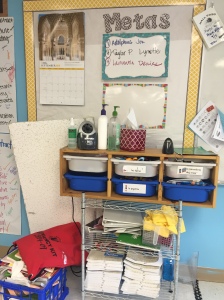In 2014 I had the delight of presenting at ACTFL’s fall conference with Sara-Elizabeth Cottrell and Laura Sexton on the topic of personalizing instruction and assignments for students. You can see our presentation and handouts from that session here.
Since then I changed schools to an innovative, forward thinking renaissance school where we are given the challenge, the latitude, and the support to rethink school and how we conduct our classes. It is very hard work, but the rewards of our efforts are starting to show. Last year was the first year for the school and a lot of effort was focused on just getting through each day. This year has been better in that regard, and it has allowed me the ability to update and edit some ideas and practices that got set aside in last year’s survival mode.
One of those things is Choose Your Own Adventure, a personalized, student voice & choice assignment that asks students to use their developing language skills outside of class. In my novice and intermediate classes I generally don’t assign homework–maybe twice a month–unless it’s by student request to have more time to work on something. The exception to this “no homework” guideline is Choose Your Own Adventure. Students select their task for the week, complete the requirements, document their work on a Google form, and then on Fridays they share what they did with a small group of classmates. They are strongly encouraged to invent their own adventures, and even more if it includes family and friends. We are starting this week, so I’ve updated the packet which you can find here. To save paper, all of this will be run through Google Classroom this year. Yay technology! Many thanks to Laura & Sara-Elizabeth for their ongoing editing and suggestions.







